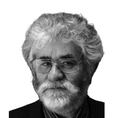At a fundamental level, music may be described as a train of vibrations in the air. It can be further reduced to numbers – a string of binary digits (bits) that can be stored on a CD or sent around the world in a split second.
But music carries enormous emotional content and can stir our innermost feelings, raising us to lofty heights or plunging us into gloom. It is international in nature, crossing cultural boundaries and accessible to everyone without any essential preparation or education.
Our response to music is spontaneous and automatic rather than rational or logical. Yet, much can be gained by analysing music in physical and mathematical terms. According to Gottfried Leibniz, music is the pleasure the human mind experiences from counting without being aware that it is counting. But there is pleasure too in consciously analysing what we are hearing. There are deep connections between the art of music and the science of maths.
Johann Sebastian Bach was a composer of genius. It is clear from his work that he had deep mathematical insights and relished explorations that stretched the rules to produce masterpieces. The tradition of varying between strict observation of convention and daring excursions into the unknown has endured for centuries.
READ MORE
Paul Desmond’s Take Five, recorded by The Dave Brubeck Quartet, was the biggest-selling jazz song of all time. The late Burt Bacharach loved experimenting with time signatures: “Do You Know the Way to San Jose?” is in cut common time, but the phrase length is five bars instead of the usual four. This hyper-metre evokes surprise and has an uplifting effect. Another example is the popular song Golden Brown, which opens with a sparkling rhythm, alternate bars having six and seven beats; you just can’t sit still when it plays.
[ The potency of pattern: Mind the gapOpens in new window ]
Harmonic curves
Rhythm is just one of the aspects of music amenable to mathematical exploration. Legend has it that Pythagoras discovered the connection between harmony and number. Each tone has a characteristic rate of oscillation: where a musician says pitch, a physicist says frequency. If the frequencies of two notes have a ratio of two small numbers, the notes are harmonically related and sound pleasant when played together. C4 (Middle C) and G4 (the G above C4) have frequencies in the ratio two to three and combine to produce a chord called a Perfect Fifth.
We can add the two notes and plot a graph or combine them in a diagram called a Lissajous curve or harmonograph. A perfect fifth, shown as blue curves in the diagram, produces a simple pattern; its aesthetic appeal is in harmony with the sound of the chord. Since the numbers in the ratio are small, the combination (C – G) is harmonious.
The waveform and harmonograph get more complex as larger number ratios occur: the combination of C and C♯ (a semitone) has a shrill sound, and the Lissajous curve is correspondingly intricate (red curves). All is not lost: a sound that is not of itself pleasing often occurs in music only to be relieved or resolved by a more concordant sound.
⋅ An online series of six lectures, The Nature of Music, starting next month, examines the intimate connections between music and maths through rhythm, pitch, scale, harmony and dissonance. Registration is free at gresham.ac.uk
Peter Lynch is emeritus professor at the School of Mathematics & Statistics, University College Dublin. He blogs at thatsmaths.com
















